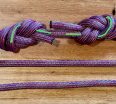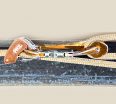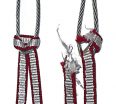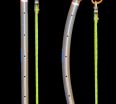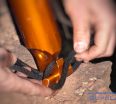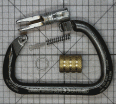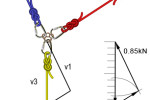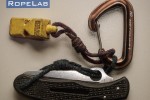Abseiling basics
Rope technicians have access to more instructional opportunities than ever before. Courses, books, online references, and videos mean that skills including speed rope ascents, passing knots, use of new devices, etc are now common. However, one thing that concerns me is lack of comfort with one of the most basic skills: negotiating a “difficult” edge.
I have often stated that if there were only two things I could observe to get a sense of technician competence they would be:
- Hand them a rope and watch them tie a figure-of-eight on-a-bight.
- Ask them to negotiate a difficult edge – and watch to see whether they are more concerned with the path of the rope, or where they are going to place their feet.
It is great that so many people are now aware of the benefit of avoiding or protecting ropes from edges but, we must remember, it is often not possible to do this in the natural environment. Climbers, mountaineers, cavers, canyoners, and many other rope users MUST be confident that they can choose the rope path that is not only stable, but the one least likely to result in rope damage.
Believe it or not, I worked as a rock climbing instructor and canyon guide for 10 years and only once (very early on) did one of my clients damage a rope. After that experience, I completely changed my approach to rope management.
There is no secret or magic trick to this. It just takes practice. When I observe someone abseil over an edge, I want to see them have every millimetre of the rope path planned and carefully placed BEFORE they are committed to being over the edge. This includes:
- Rope following the shortest path from anchor-edge-ground. This normally means the rope path is perpendicular to edge and in the lowest point possible.
- Any protrusions/depressions that influence the rope path are assessed for stability. If they are needed to keep the rope in a particular place, are they unquestionably sound or tall/deep enough to ensure the rope can not move.
- Significant edges are either avoided (choose a different anchor & rope path) or appropriately protected.
Once under way, the descent (or ascent) of the rope should be as smooth as possible. Any bouncing will result in rope stretch – which in turn results in vertical abrasion of the rope.
The rope is the only thing that holds you up – treat it with the true respect it deserves. Perhaps it looks cool, but big leaps and fast descents, to my eye, are generally signs of inexperience and over-confidence.
If you are moving to thinner ropes, then even more skill and respect is required. Note that the amount of material in a rope is proportional to the square of the radius so if:
- an 11mm rope has a cross sectional area of 95mm^2,
- an 8mm rope has a cross sectional area of 50mm^2,
- a 6mm rope has a cross sectional area of 28mm^2.
Then an 8mm rope has half the amount of material as an 11mm rope!

If considering using smaller ropes then I would absolutely recommend re-visiting the basics of abseiling. Be humble, find a challenging location, with low anchors, and lots of rope stretch – and repeat. Of course, do this with the close supervision of others and possibly even a separate belay or safety.
(c) Richard Delaney, RopeLab 2020


